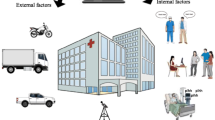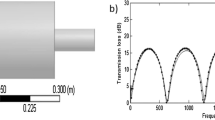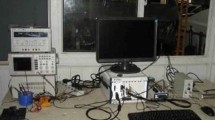Abstract
Identifying the components of a vehicle’s interior noise is important in many phases of the noise, vibration, and harshness (NVH) development process. Many test methods that have been widely used in the automobile industry to separate noise sources are based on system identification methods in the frequency domain. However, none of the frequency response function-based methods can directly estimate the wind noise component. In this article, an analytical model for the interior noise level based on a simple power law was developed. It was assumed that the mean squared acoustic pressure for the interior noise could be obtained by summing up those of the wind noise, road noise, and background noise. The wind noise and road noise were further assumed to depend only on wind speed and the vehicle’s driving speed, respectively, and to follow a simple power law. The resulting analytical model includes five parameters that can be optimized for the vehicle and the road. The validity of the model was verified by using data obtained from cruise tests performed on a proving ground for cruise speeds ranging from 40 km/h to 130 km/h. The model is applied to the overall and 1/3-octave bands of interior noise and is shown to describe the data trends fairly well. For the test vehicle used in the present work, the overall mean squared pressures for the wind and road noise components are shown to be proportional to the wind speed to the 5.8 power and to the driving speed to the 3.4 power, respectively.
Similar content being viewed by others
References
Bendat, J. S. (1976). System identification from multiple input/output data. J. Sound and Vibration, 49, 293–308.
Bendat, J. S. and Piersol, A. (2000). Random Data: Analysis and Measurement Procedures. 3rd Edn. Wiley-Interscience. New York.
De Klerk, D. and Ossipov, A. (2010). Operational transfer path analysis: Theory, guidelines and tire noise application. Mechanical Systems and Signal Processing, 24, 1950–1962.
Dodds, C. J. and Robson, J. D. (1973). The description of road surface roughness. J. Sound and Vibration, 31, 175–183.
Harris, C. M. (1957). Handbook of Noise Control. McGraw-Hill Book Company. New York.
Lindener, N., Miehling, H., Cogotti, A., Cogotti, F. and Maffei, M. (2007). Aeroacoustic measurements in turbulent flow on the road and in the wind tunnel. SAE Paper No. 2007-01-1551.
Mousley, P. D., Watkins, S. and O’shea, P. (2001). Modulation of in-cabin car wind noise by atmospheric winds. Proc. 8th Int. Cong. Sound and Vibration, Hong Kong, China, 533–540.
Oettle, N., S.-Williams, D., Dominy, R., Darlington, C., Freeman, C. and Tindall, P. (2010). The effects of unsteady on-road flow conditions on cabin noise. SAE Paper No. 2010-01-0289.
Peric, C., Watkins, S. and Lindqvist, E. (1997). Wind turbulence effects on aerodynamic noise with relevance to road vehicle interior noise. J. Wind Engineering and Industrial Aerodynamics, 69–71, 423–435.
Robson, J. D. (1979). Road surface description and vehicle response. Int. J. Vehicle Design, 1, 25–35.
Romberg, G. F. and Lajoie, R. G. (1977). An objective method of estimating car interior noise. Proc. Int. Automotive Engineering Cong. and Exposition, Paper No. 770393, Detroit.
Van der Auweraer, H., Mas, P., Dom, S., Vecchio, A., Janssens, K. and Van der Ponseele, P. (2007). Transfer path analysis in the critical path of vehicle refinement: The role of fast, hybrid and operational path analysis. SAE Paper No. 2007-01-2352.
Author information
Authors and Affiliations
Corresponding author
Rights and permissions
About this article
Cite this article
Kook, H.S., Lee, D. & Ih, K.D. Vehicle interior noise model based on a power law. Int.J Automot. Technol. 12, 777–785 (2011). https://doi.org/10.1007/s12239-011-0090-0
Received:
Revised:
Published:
Issue Date:
DOI: https://doi.org/10.1007/s12239-011-0090-0




